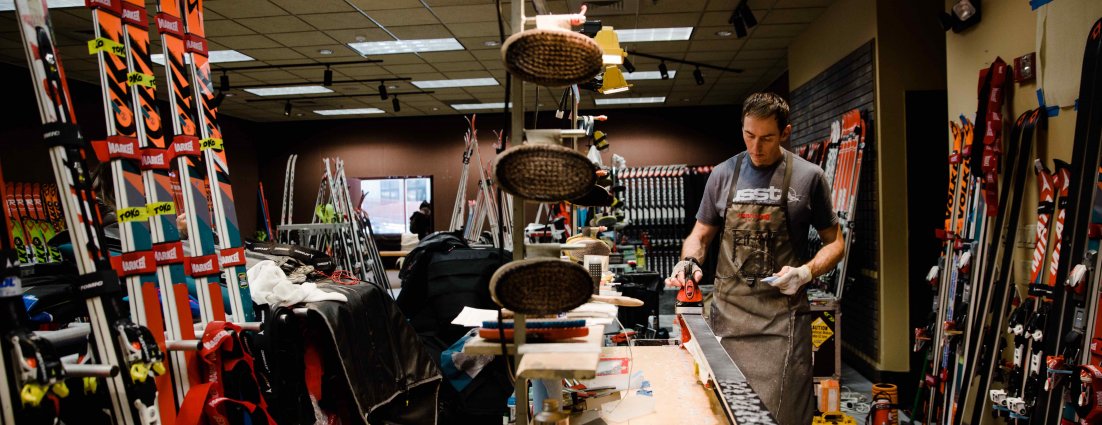Tips and Tricks for the Perfect Ski Tune
11.29.2016 | Ski Racing Staff

When you pull back the curtain on some of the top pro skier’s technicians, you won’t find much wizardry. Instead, you’ll see some fairly boring routines. But it’s these daily habits that lead to whizzing-fast times on the racecourse and eye-popping, podium-topping performances by athletes across the spectrum.
“Every technician has a routine,” says Aaron Haffey, who tunes skis for Norwegian alpine skier Leif Kristian-Haugen. “Mine is about handling the ski fewer times. Every movement is deliberate. Efficiency is critical with large numbers of skis, but it is equally important with just a pair or two.”
Of course, as a NASTAR racer, you should find your own individual approach to consistency. But, armed with a few basics (and maybe a few new tools), you can redefine how you tune and how effectively you spend time working on your skis.

1. Turning down the iron and applying more wax
Norwegian Ski Team technician Pepi Culver has spent years watching young racers and their parents tune skis. “So many athletes,” he says, “use too little wax, and turn their irons up way too hot.” If you’re interested in preserving the integrity of your ski base and want to spend less time fighting base burn, turn down your iron and be generous with the amount of wax you apply. You’ll end up using more of your wax, but maintaining an adequate layer of wax between the ski base and iron is crucial.
2. Keeping tools in good working order
This will ensure the highest quality work in the least amount of time. “Overused, dirty and otherwise neglected stones, files, guides and cutters reduce the quality of your work,” says Culver. “Just take care of your tools!”
3. Ditching the spring clamp
“It’s a huge mistake,” says Haffey. “You might think you’re getting a 3- or 4- degree edge bevel, but those clamps aren’t strong enough to keep your files and stones true to the angle that you’re trying to impart.”
4. Investing in the right tools (and tunes)
“My ManTac scraper sharpener is still the best tool I’ve got on my bench,” says Haffey. “Also, the Snowglide edging tool is amazing — super user-friendly and precise.”
Adding more tools to your quiver can add up, but the increased quality, precision and time savings will more than cover your cost in the long run. And don’t forget to throw in a little fun. “Make sure you have a good sound system in your ski room,” says Haffey. “It really helps make the tediousness of your routine more bearable.”
5. Experimenting from time to time
“I’m always trying out new tools,” says Culver. “Technology keeps advancing and if those new advancements make my life easier while maintaining or increasing the quality of the work I put out, count me in.”
About the author:
Todd Carroll is a sales representative at Wintersteiger and a former alpine equipment manager at the Green Mountain Valley School. His previous work also includes serving as the eastern race coordinator for Rossignol and servicing U.S. Ski Team athletes as a race room technician at Dynastar.